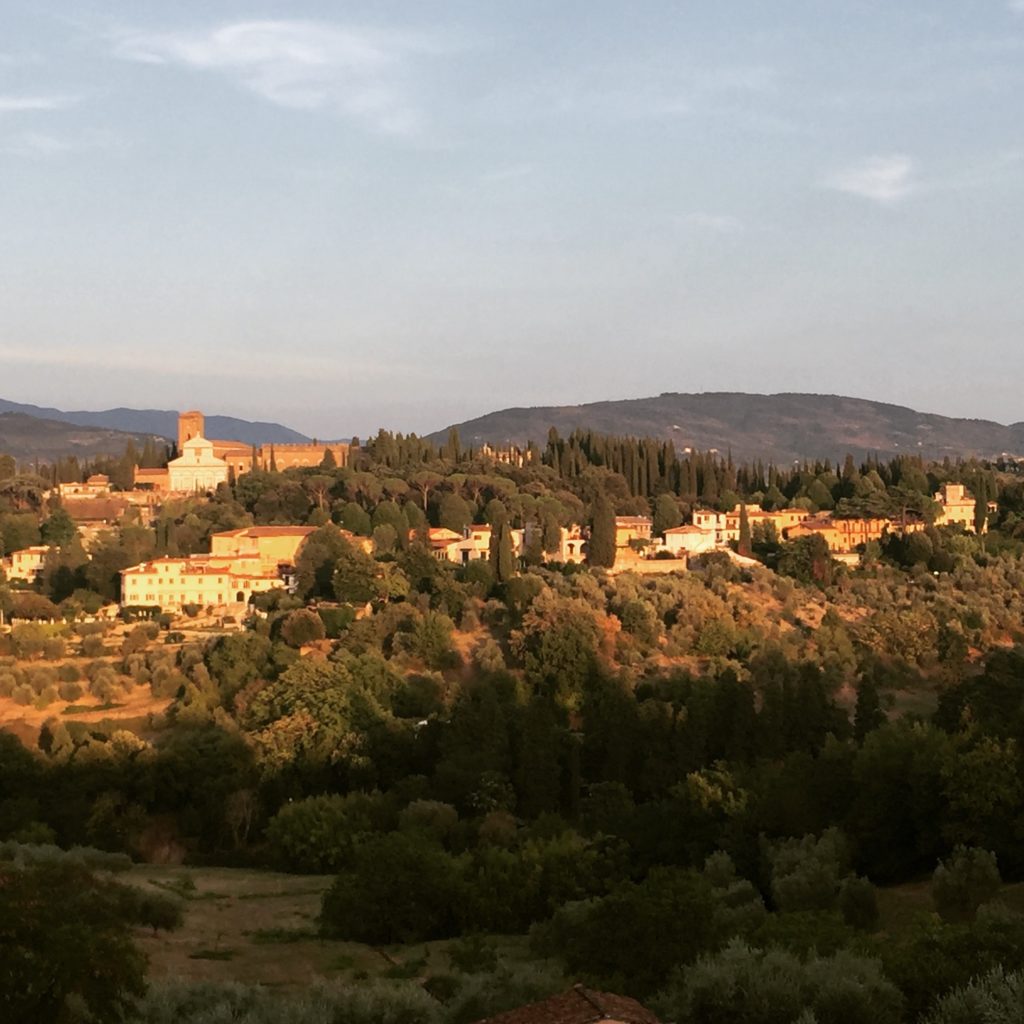
“The information was lost, we didn’t know…” The monk tells me from behind the counter of the monastic shop.
“No one had noticed the solstice sun illuminating the zodiac?”
“No, we didn’t notice.” The monk smiles. “It was figured out by Simone Bartolini.”
Simone Bartolini is an astronomer and cartographer who recently (around 2011) figured out that the marble zodiac on the floor of San Miniato Church in Florence, is in fact a solstice meridian. Having discovered the astrological function of this zodiac, it can now be said that this is the oldest solstice sundial in working order in Europe.
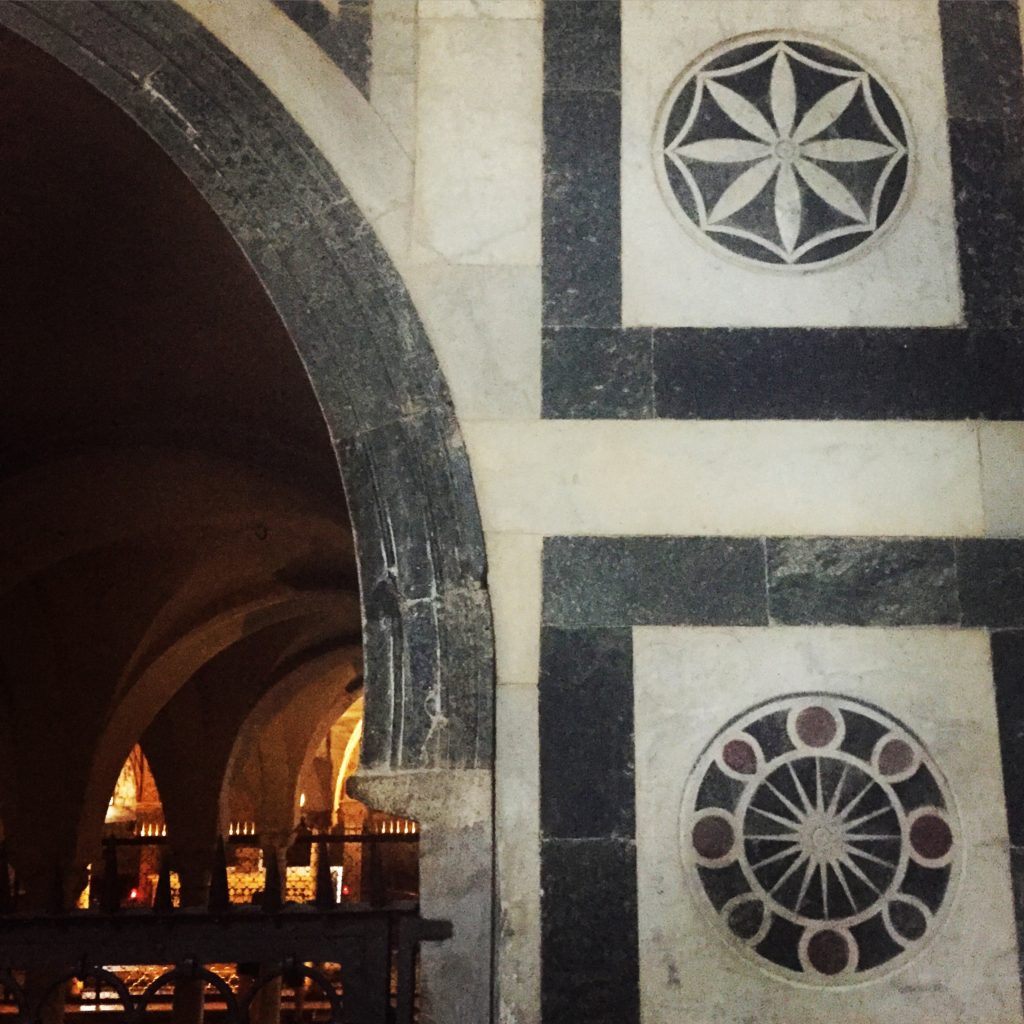
On June 20th I took the train from Lucca to Florence in order to attend this event, when the solstice sun illuminates the sign of Cancer on church’s marble floor. Ever since 1985 when I first lived in Florence I’ve found this church intriguing. Arguably the most beautiful Romanesque church in Tuscany, it is three hundred years older than Florence’s cathedral.
Its origins go back to the martyrdom of Saint Minias in 250 AD.
Minias is believed to have been an Armenian Prince from Syria. Greek speaking Syrian merchants were coming to Florence at that time, and it is they who introduced Christianity to the city, which was still pagan.
Legend has it that when the Romans decapitated Minias, he picked up his head and walked up the hill (where the church now stands) to the cave where he had meditated. There he died and a small church was built in remembrance. By the 11th century a grander church was built in his name, the one we see today.
The mosaic floor of the church, in white and green Tuscan marble, dates to 1207, and the six panels reflect Islamic influences with geometric patterns, fantastical figures, and recognizable animals.

One of panels contains a zodiac. Way back before Christ and before the current calendar was developed, the zodiac cycle was used to measure time, and the year began on the day of the spring equinox. By the Middle Ages the church in Italy was interpreting the zodiac from a Christian perspective—as a connection between the earth and heavens.
There were about 75 of us who had reserved a spot to watch this special solstice event. Once we were all inside, Simone Bartolini closed the church doors and began to tell us about his research.
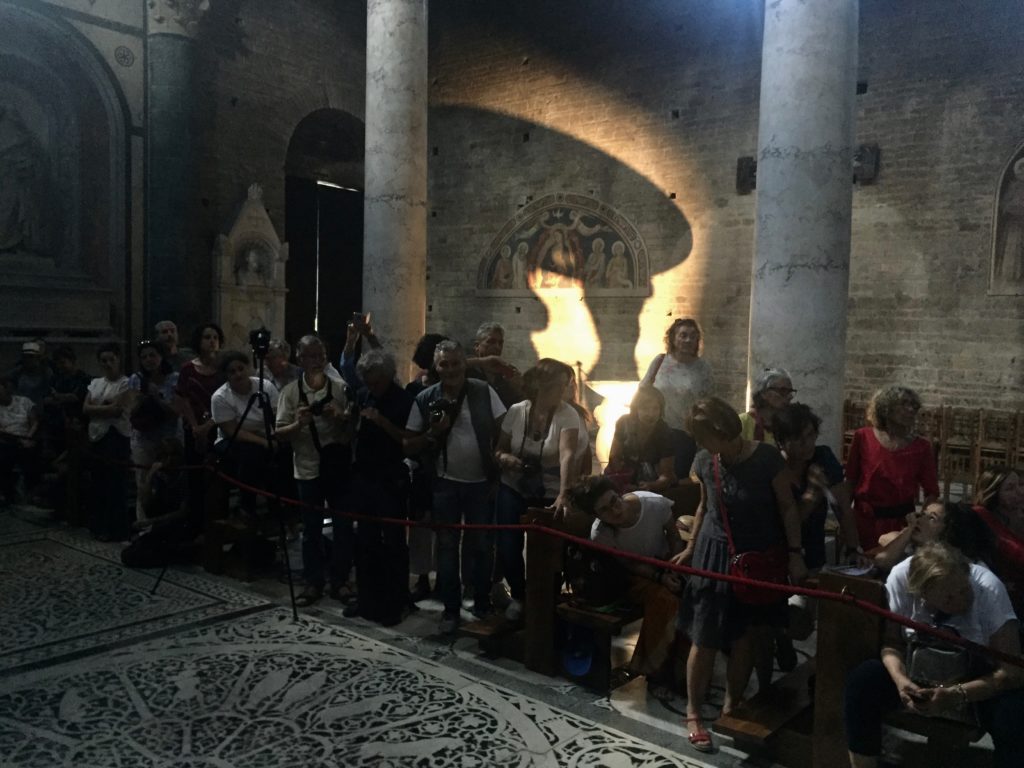
“The relationship between architecture and astronomy is almost as old as mankind itself,” he said, and reminded us that Vitruvius in De Architectura highlighted the importance of astronomy in art and architecture. He told us that during the Middle Ages, architects often employed astronomical orientations and sunlight in the construction of religious buildings in order to link humanity to the celestial realm.
Bartolini explained that Romanesque churches were constructed with their apse facing east so the sun at dawn would light up the altar, where the priest celebrated Communion. Since electricity didn’t exist, it was full of mystical significance when the Host was lit by the sun.
San Miniato is not oriented directly east, and thus the mystery began
Bartolini determined that the church of San Miniato was oriented so summer solstice sun would come through the third nave window to illuminate the sign of Cancer on the zodiac—the only sign in circular shape, making it the target for the circle of sunlight.
The light, before it touches the sign of Cancer, is a small wavering squiggle, but when it reaches the Cancer sign it morphs into a circle that fits right over the crab.
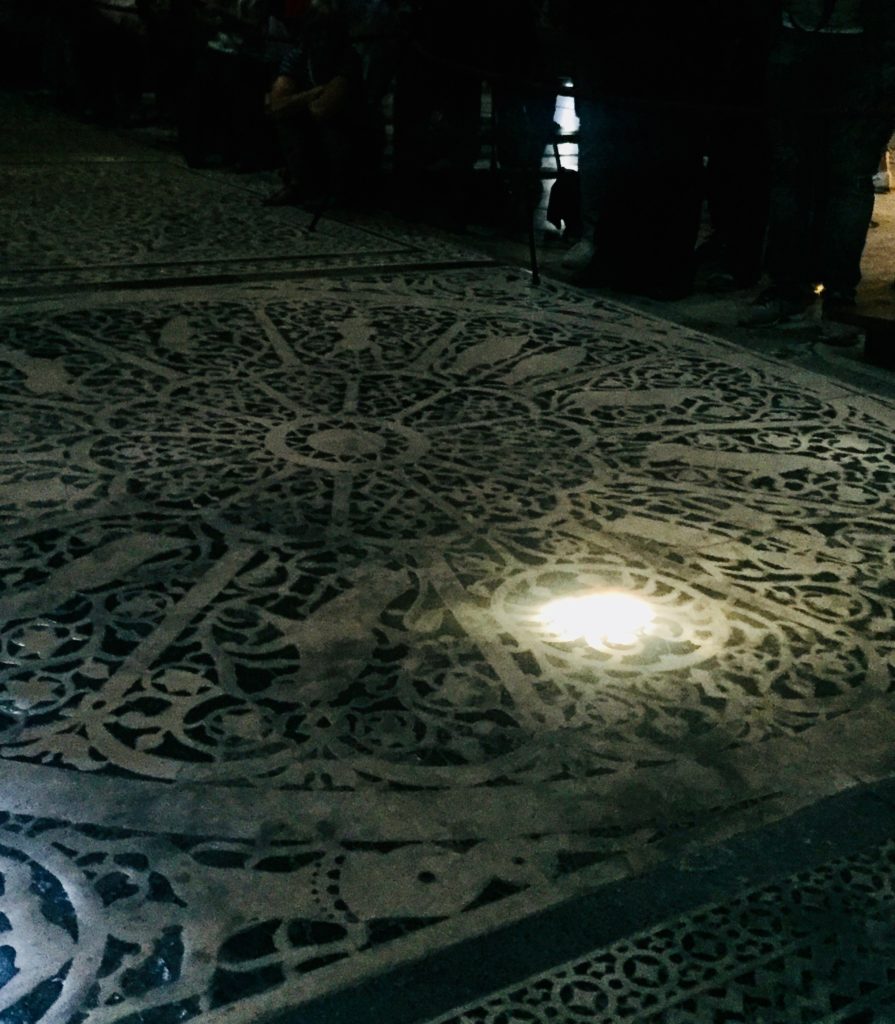
This long-forgotten meridian clock working its magic connected me to the people of the early middle ages—erasing for a few minutes the hundreds of years between us.
To reserve for this event go here. Note that Simone Bartolini’s talk is in Italian only. Be sure to check out the shop with the artisan products made by the monks. And you will want to take a photo of the view from the front of the church. Here is mine.
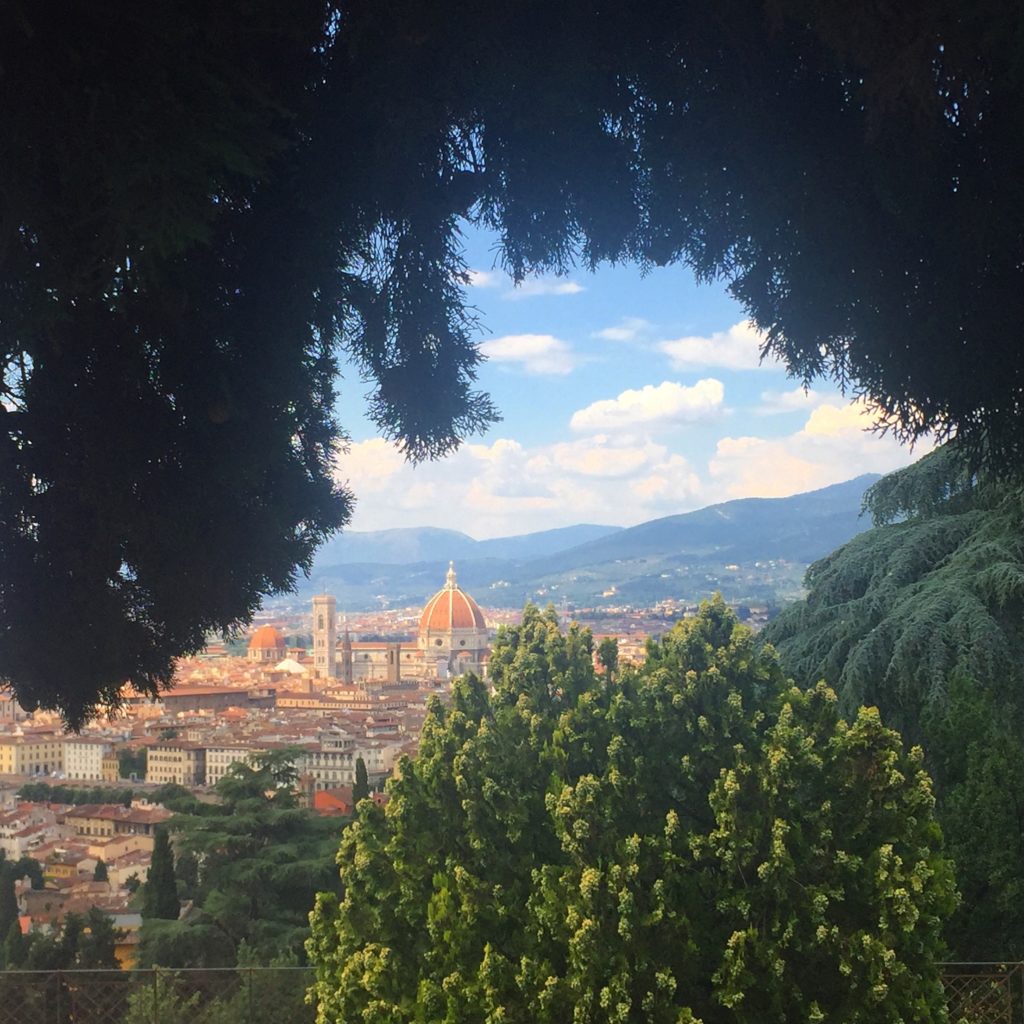
To read about other things to do in Florence go here.
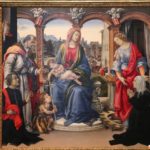
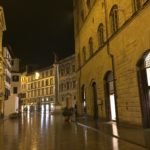
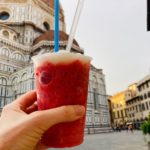
Thank you SO MUCH ! I love your lessons <3 Love, Kris
Hi Kris, so glad you enjoyed it!
This is SUPER interesting ???? Wow, love it!
Great Julia! I know, it’s fascinating huh?
So very interesting, want an amazing event you got to see, and blessed that you live in Italy, my dream, I think , and was told in another life I lived in Italy !! Thanks so much for sharing.
Hi Dena,
Ohhhh, Italy in a past life! Who told you that? I’m glad you enjoyed the post!
Thank you so much for sharing this story (and the pix, too)!
Hi Amy, you’re welcome, thanks for checking it out!
All your posts are total rays of luscious sunshine, solstice or not.
One of the joys of Italian travel is the element of time travel as well.
Thanks for taking us along!
What a lovely comment! Thank you 😃
This would have been my kind of event! Thanks for sharing that.
Prego! 🙂
I was there! Our family of 7 got to witness this. Even thought we spoke no Italian, just to be able to see this was so amazing. It was one of the highlights of our 17 day trip with our five kids in Italy!
Hi Kerri, how fun to hear that you attended this and that it was a highlight!
Very interesting article In the 1990’s went to talk in Leek Staffordshire given by David Jenkins a member of the Society of Dowsers. David & his wife studied the sacred geometry in this church extensively. They also had a book about this church but can’t remember the name of the author. Must look if I still have the transcript of David’s talk.
Hi Linda,
It sounds like their study of the church was prior to the book and the research of Simone Bartolini. Interesting that my blog post jogged your mind back to an event in the 1990s!